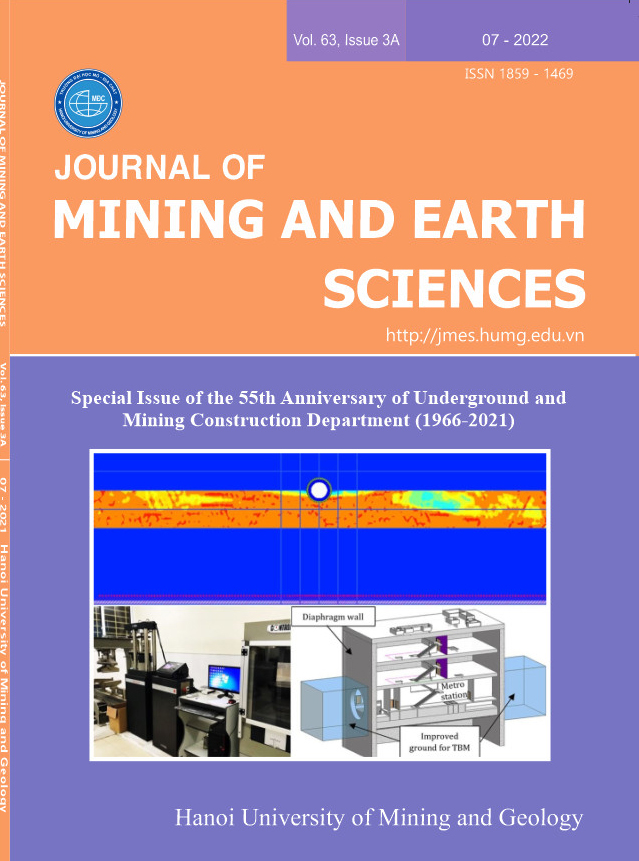Numerical analysis of the tunnel uplift behavior subjected to seismic loading
Tóm tắt
Seismic loading has always been a major concern for any engineering structures, and thereby, underground facilities (e.g., tunnels) are not exceptional. It is due to the seismically induced uplift and instability of tunnels caused by the large deformation of liquefiable soils. Therefore, the tunnel uplift behaviors subjected to seismic loading are always taken into account in any designing stages of tunnels. This study's main goal was to evaluate how a tunnel buried in liquefiable and non-liquefiable soils would behave when subjected to seismic stress. Seismic and liquefaction potential assessments of the soils surrounding the tunnel were carried out using the finite-element method. In this study, PM4sand, an advanced constitutive model was adopted in all finite-element models. In addition, the uplift displacement and excess pore pressure of liquefiable soils were studied, under a typical earthquake. Investigations were also conducted into how the thickness of the non-liquefiable soil affected seismic loading, tunnel uplift displacement, and the buildup of excess pore water pressure. As a result, during the earthquake, liquefaction was triggered in most parts of the sand layer but not in the clay layer. In addition, the tunnel uplift displacement was triggered due to the relative motion and interaction at both sides of the tunnel. In addition, this study found that the thickness of the non-liquefiable soil layer (sand layer) had a significant impact on the build-up of excess pore water pressure and, consequently, the tunnel uplift displacement. The uplift displacement and excess pore water pressure build-up were higher the thinner the non-liquefiable layer was.

